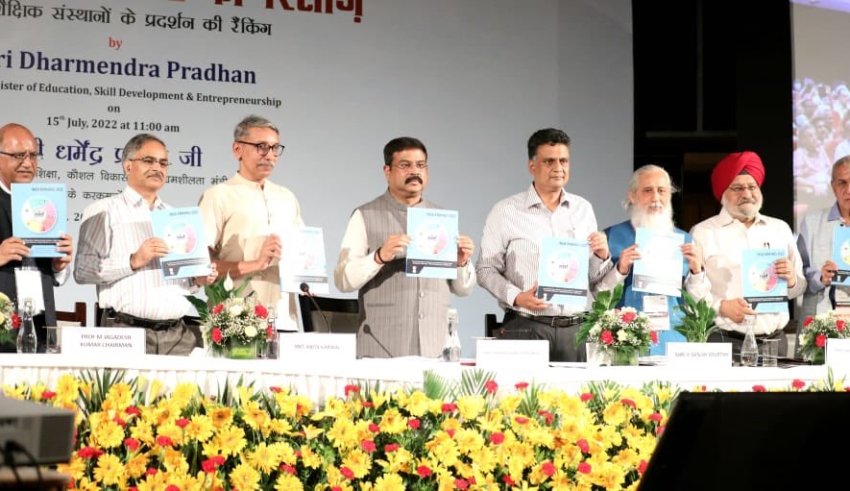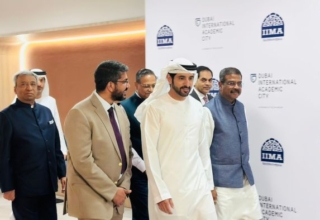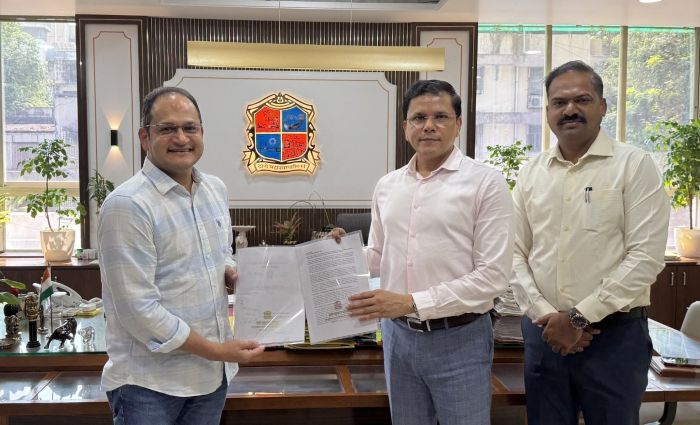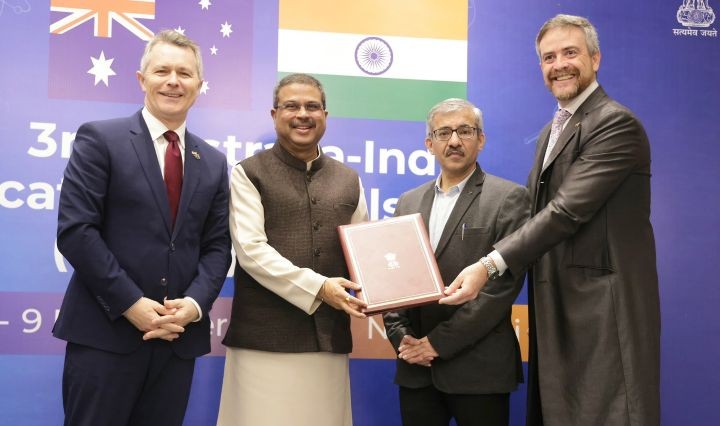
The 7th edition of Indian higher education institutions (HEIs) rankings, India Rankings 2022 under the National Institutional Ranking Framework (NIRF) was unveiled on July 15 by the union Minister of Education, Dharmendra Pradhan, at a physical event in New Delhi after two years of virtual releases. The Minister also symbolically felicitated a few of the top ranking institutions on the occasion.
The minister used the forum to deliver tough messaging and decisions on important forthcoming reforms about unification of rankings and accreditation, which is likely to impact every HEI in India in coming years. “By next year we will unify institutional accreditation presently are done by NAAC and programme accreditation presently being done by NBA. Ranking on Innovation done earlier by AICTE will henceforth integrated with NIRF. All institutions will be a part of the combined system of assessment, accreditation and rankings. Such a system will be transparent and objective,” the minister said. From next year NIRF ranking categories will also include Innovation and Entrepreneurship. NIRF rankings categories can be increased as per the needs.
He made it known that accreditation and assessment shall be mandatory, and every Higher Education Institution need to be accredited. Pradhan added: “All the institutions shall also be part of NIRF ranking system. Self-declaration and transparency shall be basis of assessment and accreditation.”
He made it clear that only those Universities/Colleges which have NAAC grading or NIRF ranking will be eligible for inclusion in the list maintained by the UGC under Section 12 B of the UGC Act, 1956 for receiving financial assistance. Dismissing the restriction of Washington Accord on NBA, he said that India’s own accreditation and rankings system will also become international and invite foreign institutions to be a part of it.
Pradhan said that our HEIs are working towards making our education ecosystem more vibrant and making our youth future ready. A robust and objective framework for assessment, accreditation and ranking will play a major role in enhancing quality in the higher education ecosystem, he added.
The Minister further said that we are moving towards creating a knowledge-based economy which is innovation-led and technology-driven. Our higher educational institutions have to play a key role in making India a leading global innovation and digital economy and making quality education affordable and accessible for the bottom of the pyramid population.
Work on ITIs & Schools accreditation system
The minister also informed that work is going on rankings of ITIs and Polytechnics while hinting that school ratings could also have a framework soon. “Soon there will be a system where each school is also accredited. We will take state governments on board. Parents will know the standing of school where the child is being admitted,” he said.
India Rankings 2022 Data
About this year’s rankings, a total number of 4,786 unique institutions offered themselves for ranking under “Overall”, category-specific and / or domain-specific rankings for India Rankings 2022. In all, 7,254 applications for ranking were made by these 4,786 unique institutions under various categories / domains including 1,876 in Overall Category, 1,249 in Engineering, and 2,270 in General Degree Colleges. A noticeable increase in institutional participation in the rankings exercise this year indicates its recognition amongst institutions of higher education in India as a fair and transparent ranking exercise. Number of unique applicants to India Rankings have increased from 2,426 in 2016 to 4,786 in 2022 whereas total number of applications for ranking in various categories have increased from 3,565 in 2016, to 7,254 in 2022 i.e. total increase of 2,360 (97.28% increase) in unique institutions and 3,689 (103.48% increase) in total applicants.
Key Highlights of India Rankings 2022
- Indian Institute of Technology Madras retains its 1stposition in Overall Category for fourth consecutive year and in Engineering for seventh consecutive year.
- Top 100 in Overall category consists of 40 CFTIs and CFU (including 38 technical institutions), 26 state universities, 24 deemed universities, 6 private universities, 7 medical institutions and 3 management institutions.
- Indian Institute of Science, Bengaluru tops the Universities Category for seventh consecutive year. It stood first in Research Institutions Category for second consecutive year.
- IIM Ahmedabad tops in Management subject retaining its first position for third consecutive year.
- All India Institute of Medical Sciences (AIIMS), New Delhi occupies the top slot in Medical for the fifth consecutive year. Moreover, AIIMS is ranked at 9thposition in Overall category for the first time.
- Jamia Hamdard tops the ranking in Pharmacy for fourth consecutive year.
- Miranda House retains the 1stposition amongst Colleges for the sixth consecutive year.
- IIT Roorkee stands at 1stposition in Architecture subject for second consecutive year.
- National Law School of India University, Bengaluru retains its first position in Law for the fifth consecutive year.
- Colleges in Delhi dominate ranking of colleges with five colleges out of first 10 colleges from Delhi.
- The Saveetha Institute of Medical and Technical Sciences takes the top slot for the first time in Dental Subject displacing Manipal College of Dental Sciences, Manipal.
Five broad categories of parameters identified in the NIRF and their weightage on scale of 10 are: Teaching, Learning & Resources (30%), Research and Professional Practice (30%), Research and Professional Practice (20%), Outreach and Inclusivity(10%), and Perception(10%). Each of these five parameters have 2 to 5 sub-parameters. A total number of 18 – 21 sub-parameters are used for ranking of HEIs in different categories and subject domains. Institutions are ranked based on total sum of marks assigned for each of these five broad groups of parameters. In addition to parameters used for Overall category, the following two additional sub-parameters were included in methodology developed afresh for ranking institutions under “Research Institutions”: i) Research Papers published in journals covered in the First Quartile of Journal Citation Report (JCRQ1); and ii) H Index.
Besides, sourcing data on various parameters from applicant institutions, third party sources of data have also been used, wherever possible. Scopus (Elsevier Science) and Web of Science (Clarivate Analytics) were used for retrieving publications and citations data. Derwent Innovation was used for retrieving data on patents. Data retrieved from these sources was shared with the institutions for transparency with a provision to give their inputs.
Today, Hon'ble Union Education Minister Shri @dpradhanbjp released the #IndiaRankings2022 under the National Institute Ranking Framework.
He also awarded the high-ranking educational institutions & delivered his address on the occasion. #NIRF pic.twitter.com/IG5Yijhrq4
— Ministry of Education (@EduMinOfIndia) July 15, 2022
Here are the links to various categories:
India Rankings 2022: Overall
India Rankings 2022: University
India Rankings 2022: College
India Rankings 2022: Engineering
India Rankings 2022: Management
India Rankings 2022: Law
India Rankings 2022: Medical
India Rankings 2022: Research
India Rankings 2022: Pharmacy








